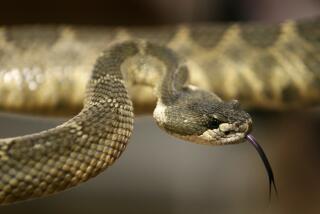Snake wrangler aims to ease public’s fear by safely relocating reptiles
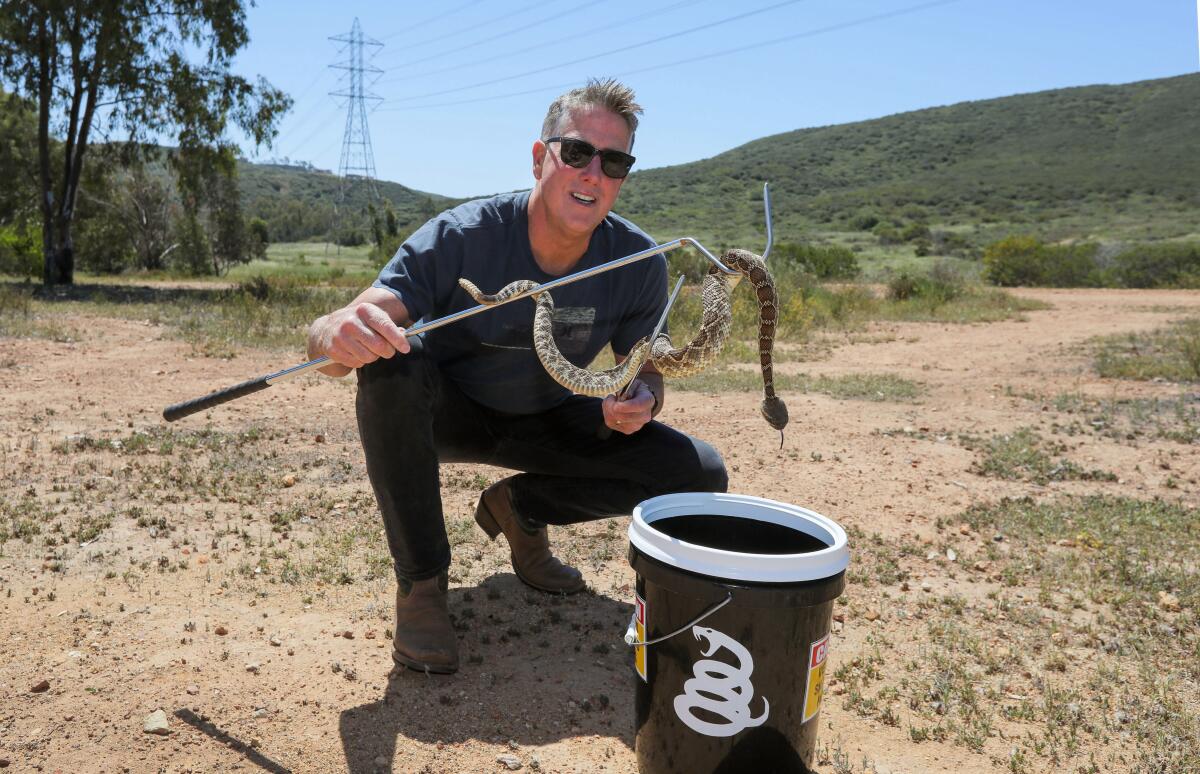
- Share via
CARLSBAD — Around this time every year, Bruce Ireland‘s phone starts ringing like mad, especially in the late afternoon on sunny days.
That’s when snakes come out their hiding places to warm themselves, and sometimes the basking spots they choose are backyards, sidewalks and neighborhood parks. On a recent Saturday alone, Ireland got 11 calls from frantic San Diego County homeowners asking for his help.
Ireland, 57, heads up the Snake Wranglers, an all-volunteer group of Coastal North County snake-lovers who are on call to remove these wayward reptiles from residential neighborhoods and release them unharmed miles away in undeveloped areas. The wranglers charge nothing for their services. They “rehome” the snakes to protect them from getting killed by dogs, homeowners and law enforcement officials.
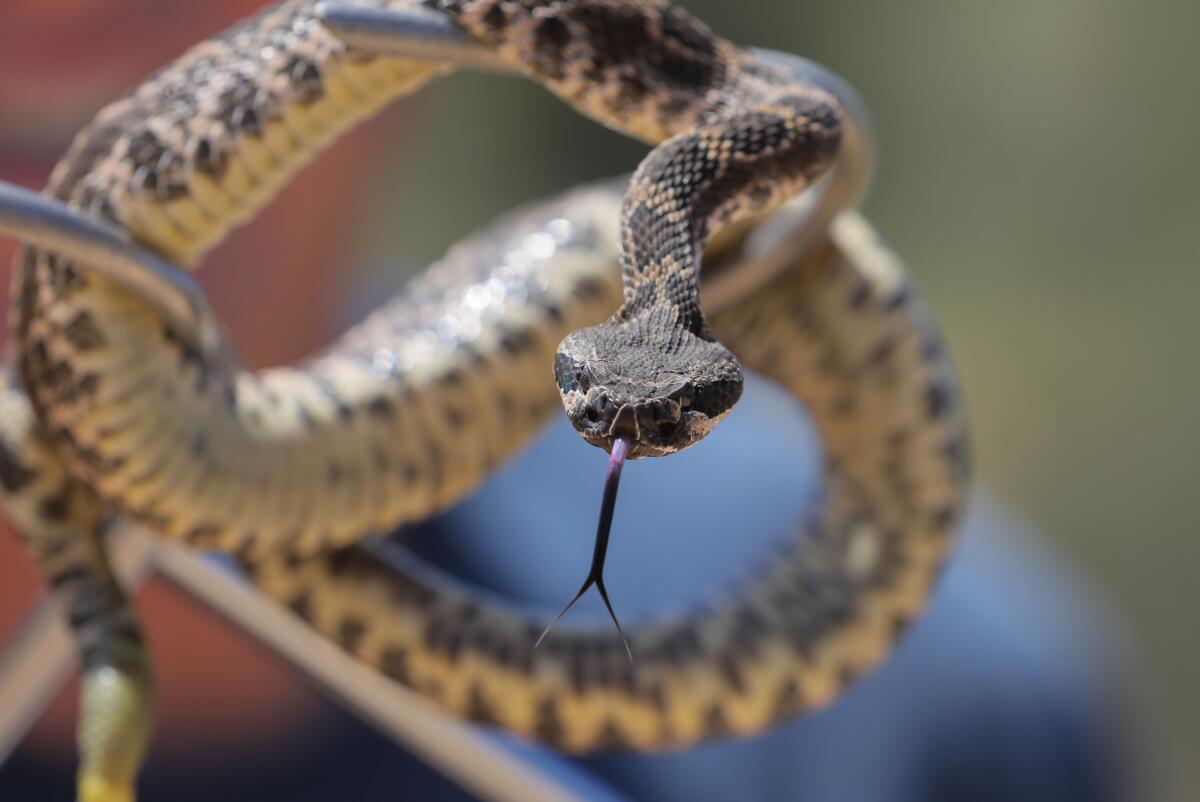
The wranglers also use their service as a way to educate the public that snakes aren’t as aggressive as people fear, and their taste for rodents is a crucial part of the local ecosystem.
“I love talking about snakes to families with kids and to preschool and elementary groups and seeing that light-bulb moment when they change their minds about snakes,” said Ireland, a Carlsbad resident. “Being afraid of snakes isn’t something we’re born with. It has to be taught. So it’s our goal to re-educate.”
Part of that teaching involves dispelling myths: Snake skin is dry, not slimy. Baby rattlesnakes are not more venomous than adult snakes. Snakes don’t chase people, they just rush to escape past humans when cornered. Snakes don’t jump, either.
“Snakes don’t have legs,” Ireland said. “They strike, but they don’t have any interest in biting humans. They save their venom for their prey.” In his 47 years of collecting and rescuing the scaly reptiles, Ireland said he’s never been bitten by a venomous snake, though he has been nipped many times by frightened nonvenomous snakes. “It’s a hazard of the job.”
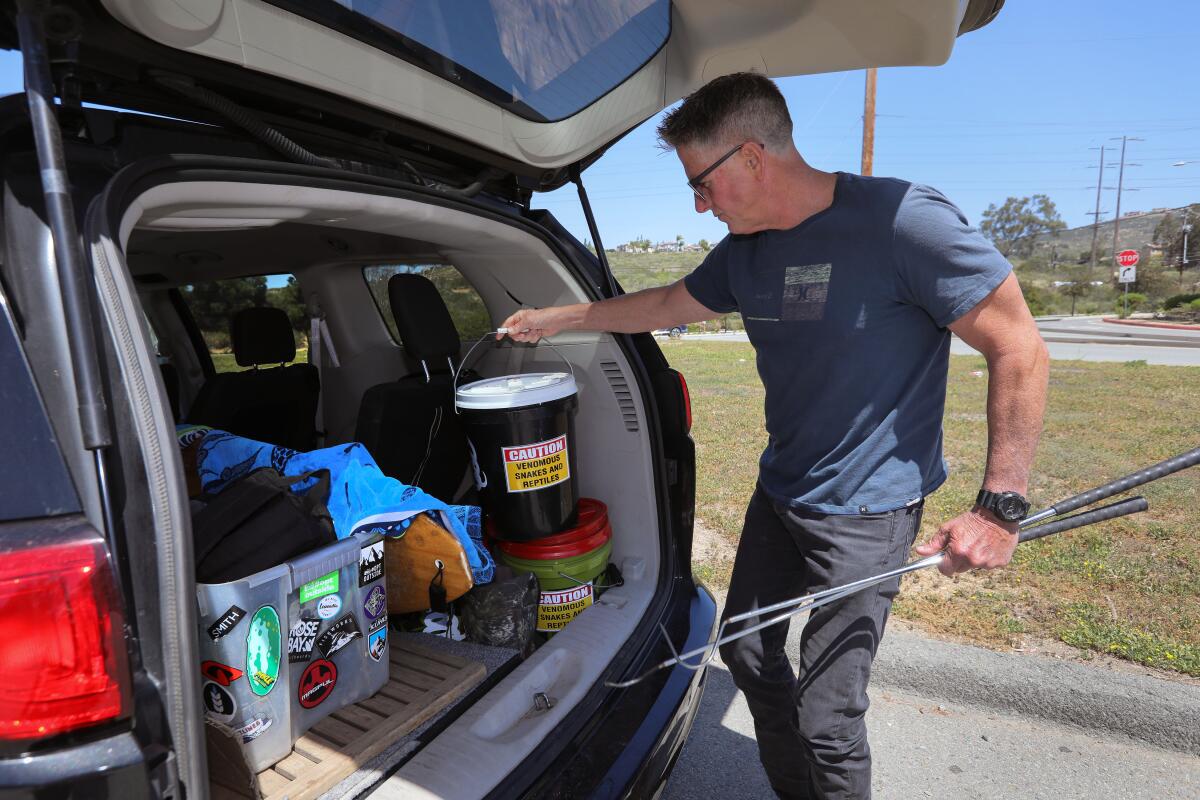
One day this month, Ireland got a call from a family in the San Elijo Hills community of San Marcos, who found a harmless gopher snake trapped in some landscaping fabric behind their fence. The agitated snake bit Ireland several times as he was trying to free it, but once the snake was pulled to safety, it became friendly and curious. By the end of his visit to the home, Ireland said the family’s young daughter was holding and playing with the snake.
Last year, the Snake Wranglers captured and relocated 304 snakes in North County. This year’s snake season — which runs roughly from late March to Thanksgiving — is off to a banner start, so Ireland said he expects the 2022 tally to exceed last year’s total. The calls come in for snakes of all varieties, including nonvenomous gopher, garter, king, racer, rosy boa and rat snakes. The wranglers also get many calls for rattlesnakes, particularly the common Southern Pacific rattler and the rare red diamond variety.
On a recent Thursday, Ireland hiked into the hills in an unincorporated part of the county carrying a black plastic bucket with the logo of a coiled snake on the side. He was taking two freshly captured Southern Pacific rattlesnakes to their new homes far away from people.
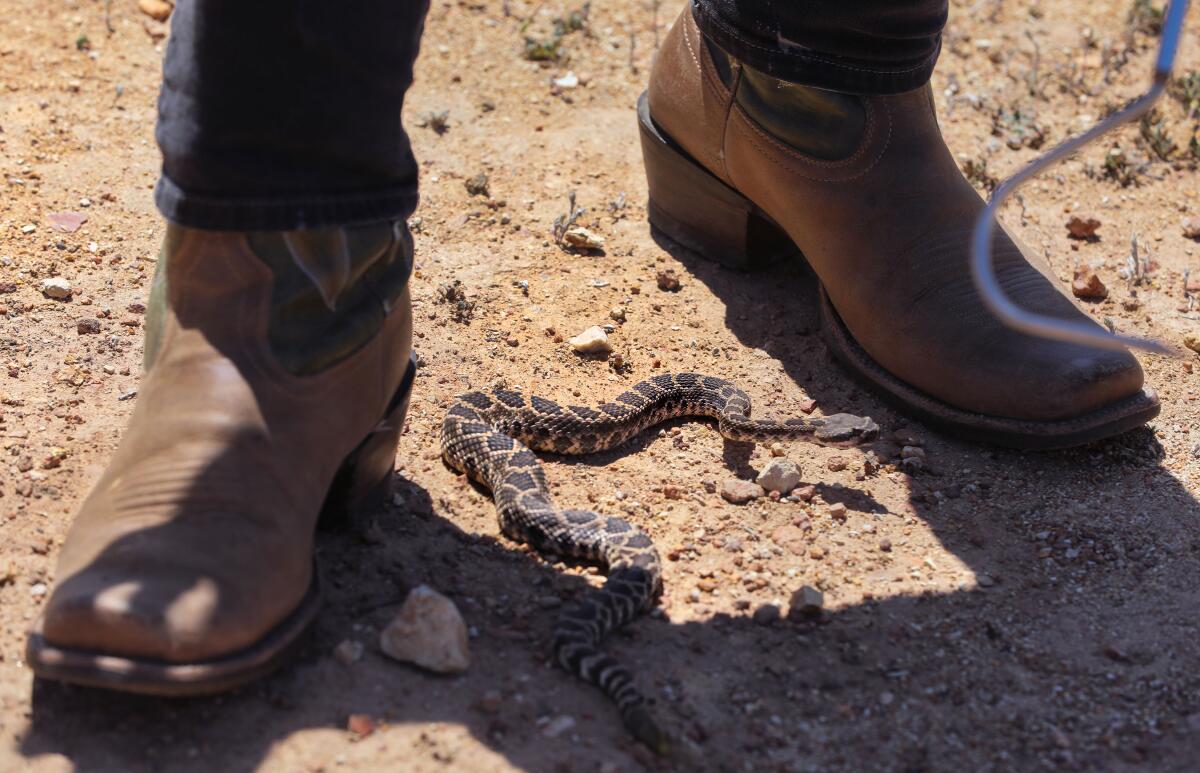
One by one he lifted the snakes out of the bucket with long metal hooks and then walked them into brush areas far away from each other to give them each their own hunting grounds. As Ireland placed the first snake in the dirt, it slithered slowly back toward him and quietly nestled itself between his boots in the shade. The second snake was more eager to escape into the brush, but neither of the snakes was using their rattle or exhibiting any aggressive behavior.
“This is what people don’t realize about rattlesnakes,” he said. “They don’t want anything to do with people. They just want to be left alone.”
The son of an oilman, Ireland grew up in England and Connecticut before his family settled in a remote part of Texas when he was 10. With no other kids to play with, he spent most of his free time hunting for “critters,” especially snakes, which he would capture with a forked stick, bring home in a pillowcase and keep in a large tank that his father set up in their home.
Thirty years ago, he got a job in sales in San Diego, where he has always enjoyed hiking and searching for snakes. With his wife of 15 years, photographer Holly Cruikshank Ireland, and their two daughters, Addy and Brooke, Ireland has adopted four pet reptiles: a Florida king snake, an African ball python, a bearded dragon and a panther chameleon.
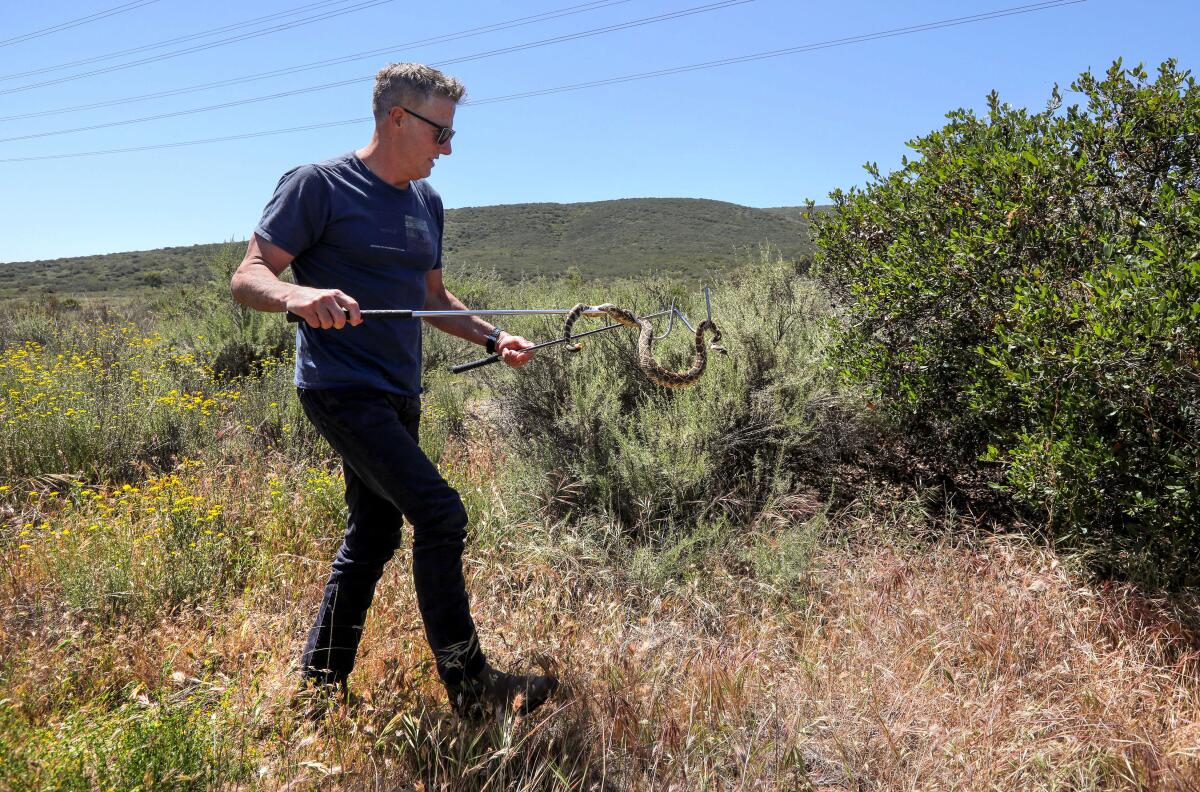
Ireland said he started capturing and relocating snakes on his own about four years ago when he saw neighbors posting on the Nextdoor app that they’d found a snake in their yard and called the fire department to remove it. Because fire officials don’t have the tools or time to relocate snakes, they usually are forced to kill them, even snakes that are nonvenomous.
To save these doomed creatures, Ireland began offering his free snake collection services on Nextdoor and quickly became overwhelmed by calls. In 2020, three other North County men who Ireland met on Nextdoor volunteered to help and the Snake Wranglers group (snake-wranglers.com) was born. Ireland’s daughters are also training as apprentice wranglers.
The website offers tips on identifying snake breeds and details on when and how to call for relocation services. Ireland posts all calls on a wranglers text loop and whichever man is available closest to the caller will go out. The wranglers limit their pickups to the coastal North County area where they live.
There are numerous businesses that offer snake removal for a price. In Poway, handyman Patrick “Trapper Pat” Brady offers free training on how to safely remove snakes, lizards, spiders and gophers. He can be reached by phone at (858) 449-7050.
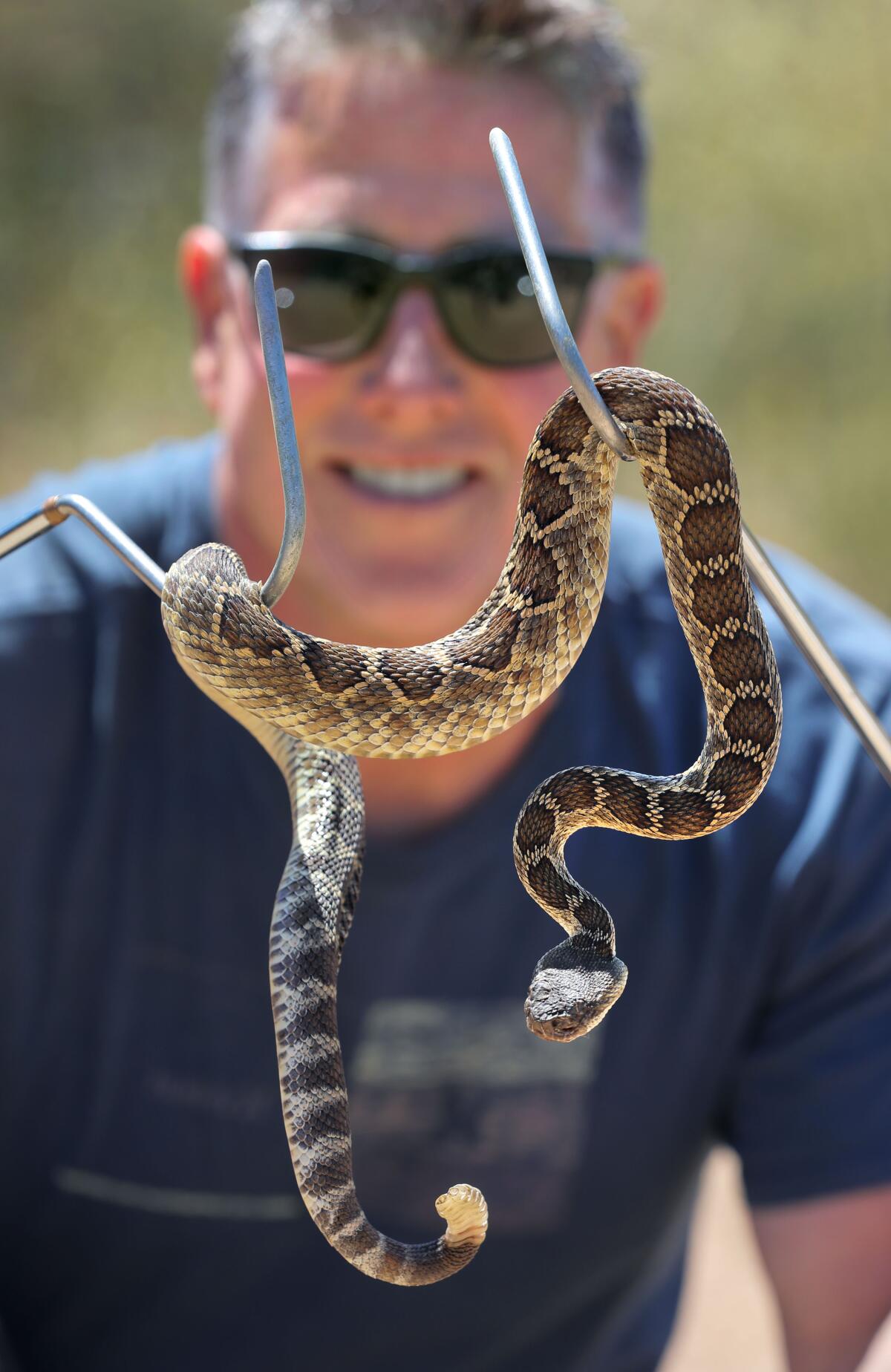
More to Read
Sign up for Essential California
The most important California stories and recommendations in your inbox every morning.
You may occasionally receive promotional content from the Los Angeles Times.

